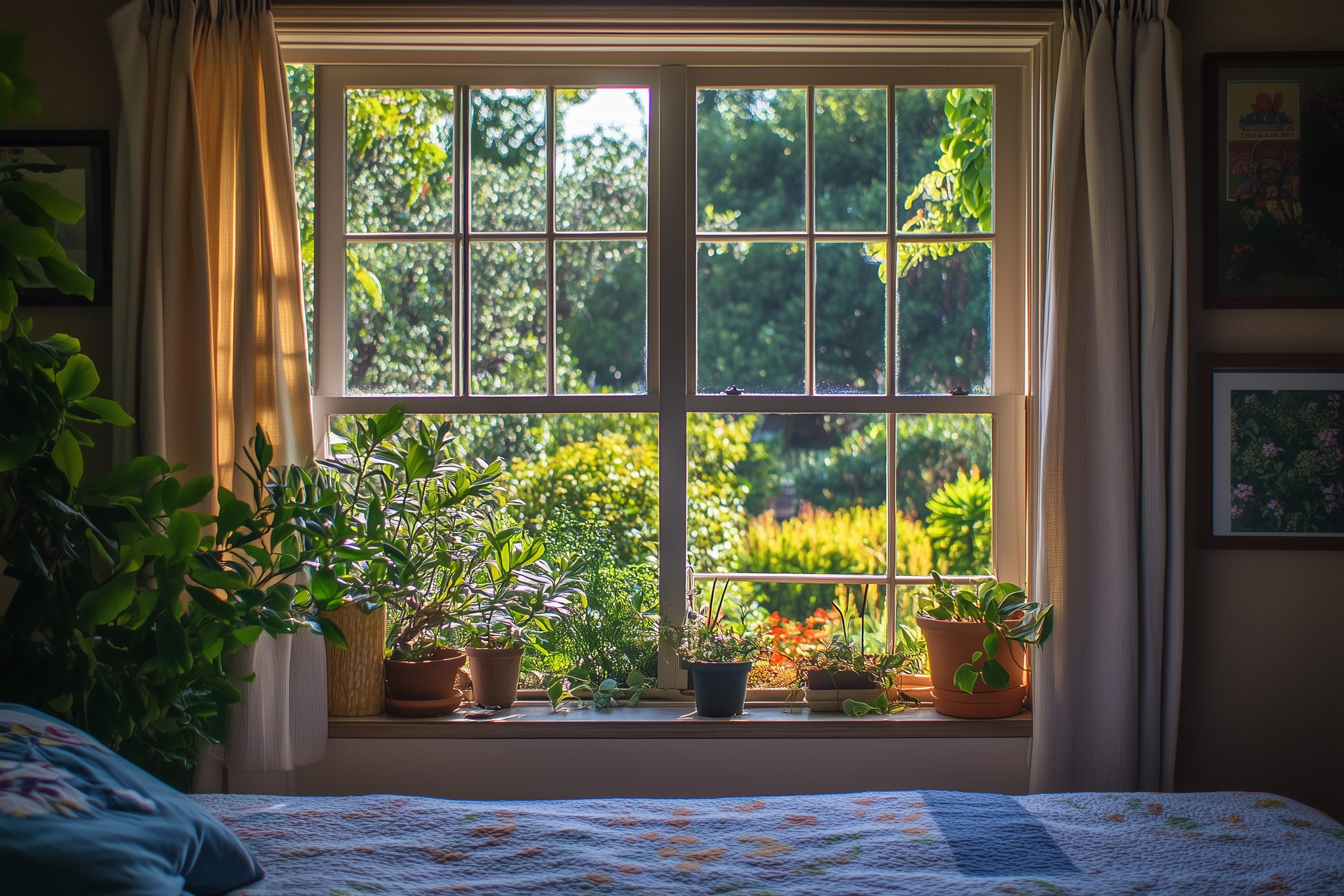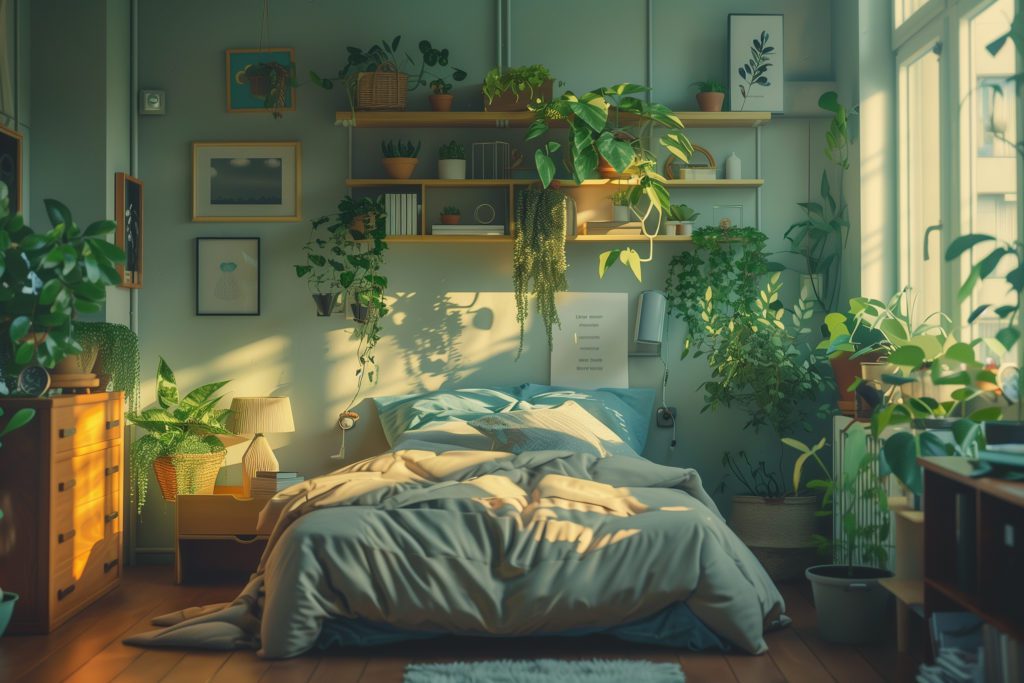
The Psychological Effects of Green Spaces on Sleep Quality
Researchers have found a link between green spaces and sleep quality. Find out how spending time in green spaces can help you sleep better tonight.

Many people across the nation live in urban or suburban environments. Unfortunately, urban dwellers may lack access to green spaces or areas covered with grass, shrubs, trees and other vegetation. This limited access to green spaces in more urban areas is a public health challenge affecting millions of people's well-being. Green spaces can be as diverse as a local park, a community garden or even a rooftop garden. Learning more about the science behind green spaces and better sleep quality can inspire you to incorporate more greenery into your life.
Why Are Green Spaces Good for You?
Have you ever wondered why walking in the park or around your block seems to lift your spirits? That's because natural sunlight exposure and spending time outdoors can elevate your mood while decreasing anxiety levels. Your surroundings significantly impact your quality of life, and strolling through green spaces is a natural way to lift your mood if you're feeling down. Additional benefits from green spaces include:
- Enhanced cognitive function and a boost in your attention span
- Diminished anger, frustration and anxiety
- Reduction in stress and cortisol levels
- Strengthened immune system
Green spaces provide a soothing environment and help you clear your head after a long day. Spending time outside encourages physical activity and can help regulate your sleep cycle, including quality and duration. Natural light and fresh air also promote deeper relaxation and stress reduction.
How Does Exposure to Green Spaces Enhance Your Quality of Sleep?
Not only can exposure to green spaces boost your mental health, but it can also help you sleep better. A recently published study found that participants living on streets featuring more vegetation and trees were likelier to experience a good night's sleep. Similar benefits occur for those who live near views of blue spaces such as bodies of water or the coastline. An additional finding was that those who spent leisure time in natural settings had a reduced risk for sleep deprivation and better emotional well-being.
Living close to a park or a trail also positively impacts your lifestyle. When you live closer to these types of areas, you are more likely to utilize them, increasing your physical activity and exercising more often. Incorporating healthier habits into your routine can help you tackle stress and may even replace unhealthy habits like smoking and drinking, which can affect your sleep quality.
Green Spaces and Child Development
Green spaces offer plenty of benefits for everyone, including children. They play an essential part in child development, including promoting physical activity and social interaction with other kids. While one study out of Germany and Australia found little evidence of better quality sleep in children living near green spaces, another study assessed the impact of these spaces on children's mental health. This study found evidence suggesting that early and frequent green space exposure is associated with lower levels of anxiety and depression. Therefore, policies protecting and promoting access to parks and walking trails can alleviate early mental health risks among children.
Creating More Green Spaces at Home
Whether you live in a high rise or can't regularly make it to a green space outdoors, you can create your own at home. The key to creating an ideal green space is to bring in enough foliage to make the area feel as immersive as possible. Here are a few ideas to help you get started:
- Plant a garden - A cozy balcony oasis or an herb garden is an excellent way to de-stress and feel more connected to nature. Additionally, a vegetable garden could help you save on your grocery bill.
- Create a wildlife habitat - Creating a backyard habitat perfect for birds and bees can help them thrive while supporting your local ecosystem and adding beauty to your space.
- Build a plant wall - A plant wall creates visual interest and is a great way to eliminate air pollutants from your home. You can cover the wall with potted plants or place them in a planter attached to it.
- Buy some houseplants - Houseplants like succulents and bamboo can be easy to care for, even if you don't have much experience. Certain houseplants may even promote better sleep quality.
If you have some outdoor space, consider designing a special spot in your yard or patio for calming activities like meditation or yoga. By personalizing the space with plants and other natural elements, you can make it your own personal retreat.
Other Ways To Enhance Your Sleep Routine
Spending time in green spaces improves your mood and overall well-being and can dramatically affect how well you sleep at night. If you are unable to get away to a local park or walking trail often, there are still other things you can do to enhance your quality of sleep:
- Engage in regular physical exercise. Physical activity has been linked to a better quality of sleep.
- Do not drink alcohol or consume caffeinated drinks close to bedtime.
- Refrain from eating a heavy meal at least three hours before bed.
- Wake up and go to sleep at the same time each day. A consistent sleep schedule is important even on the weekends. Track the consistency of your sleep using Pillow.
- Keep the thermostat at a lower temperature in the evening. The best temperature for sleep is between 60-67 degrees Fahrenheit or 15-20 degrees Celsius.
You should also try to avoid using your phone or watching television before bed. The blue light emitted from both devices can disturb natural melatonin production, making it more difficult to doze off.
Sleep and mental health are interconnected. Green spaces positively affect your mood, and when you feel better, you sleep better. Whether you're hitting the walking trails in the evening after work or taking a morning stroll through your local park, spending time surrounded by nature is an excellent way to improve your overall well-being. Not only will you be getting more exercise, but you'll also feel happier and sleep better.

Written by
Emily Mendez
Emily Mendez is a former therapist and mental health author. She is one of the leading voices in mental health. Emily's writing has appeared in eCounseling, SonderMind, and more. Emily is frequently interviewed by Healthline, Fatherly, INSIDER, Family Circle, and other national media for her advice and expert opinion on the latest mental health topics.
Download Pillow
Get help
Press & News
Legal
Connect
X (Twitter)
Company
Copyright © Neybox Digital Ltd.



